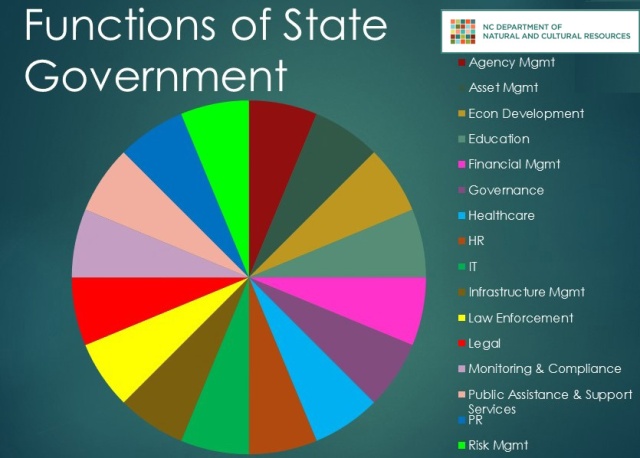A years-long project at the State Archives of North Carolina has culminated with the publication of the first Functional Schedule for North Carolina State Agencies. Where state agencies have previously relied in a General Schedule for State Agency Records and hundreds of program-specific schedules, now all state agency officials have one 16-part retention and disposition schedule to guide them in the management of their public records.
In 2015, the Records Analysis Unit of the Government Records Section at the State Archives of North Carolina (SANC) began a project to revamp the retention and disposition schedules for state agencies in North Carolina. Our overarching goals of the project were to simplify records retention, make the assignment of records dispositions more transparent, and ensure the retention of records with permanent value, either within the creating agency or at the State Archives. We embraced the technique of functional analysis, whereby the functions of an institution are defined and the records that document these functions are linked. Sixteen functions of North Carolina state government were identified, their record types listed, and disposition instructions provided.
 Over 200 stakeholders from across North Carolina state government participated in meetings to review draft schedules for each of the 16 functions, and many staff at SANC in addition to the Records Analysis Unit also provided constructive feedback. After these schedules reached their final draft stage, records analysts worked in concert with state agencies to crosswalk their records inventories to the new functional schedule.
Over 200 stakeholders from across North Carolina state government participated in meetings to review draft schedules for each of the 16 functions, and many staff at SANC in addition to the Records Analysis Unit also provided constructive feedback. After these schedules reached their final draft stage, records analysts worked in concert with state agencies to crosswalk their records inventories to the new functional schedule.
These functional schedules standardize disposition instructions across State government and focus on the function of government that necessitates the creation of a record rather than on the particular agency that creates or maintains the record. Therefore, users will not need to find relevant record types based on agency hierarchy but instead can identify record types relevant to the particular function of government they perform. In addition, if the responsibilities of an agency change over time, the appropriate retention and disposition instructions for the records generated by this new function are already identified among the 16 functions identified above. Realizing that an increasing share of state agency records are being created and maintained electronically, we attempted to group records with similar functions in “big buckets” in order to facilitate the appropriate disposition of these records that are housed in document management systems.
These new schedules can be viewed at https://archives.ncdcr.gov/documents/functional-schedule-state-agencies. For a more in-depth look at the process behind this project, check out the case study published by SAA’s Government Records Section.
